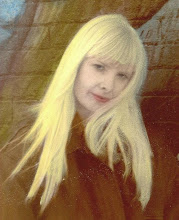
Clooney's first recordings, in May 1946, were for Columbia Records. She sang with Tony Pastor's big band. Clooney continued working with the Pastor band until 1949, making her last recording with the band in May of that year and her first as a solo artist a month later, still for Columbia.
In 1951, her record of "Come On-a My House" became a hit. It was her first of many singles to hit the charts—despite the fact that Clooney hated the song passionately. She had been told by Columbia Records to record the song, and that she would be in violation of her contract if she did not do so.
Around 1952, Rosemary recorded several duets with Marlene Dietrich.
In 1954, she starred, along with Bing Crosby, Danny Kaye, and Vera-Ellen, in the movie White Christmas. In later years, Clooney would often appear with Crosby on television, such as in the 1957 special The Edsel Show, and the two friends made a concert tour of Ireland together. Crosby opined that Clooney was "the best in the business." In 1960, she and Crosby co-starred in a 20-minute CBS radio show that went to air before the midday news every weekday.
She starred, in 1956, in a half-hour syndicated television musical-variety show The Rosemary Clooney Show. The show featured The Hi-Lo's singing group and Nelson Riddle's orchestra. The following year, the show moved to NBC prime time as The Lux Show Starring Rosemary Clooney but only lasted one season. The new show featured the The Modernaires singing group and Frank DeVol's orchestra.
Clooney left Columbia Records in 1958, doing a number of recordings for MGM Records and then some for Coral Records. Finally, toward the end of 1958, she signed with RCA Victor Records, where she stayed until 1963. In 1964, she went to Reprise Records, and in 1965 to Dot Records. She moved to United Artists Records in 1966.
Beginning in 1977, she recorded an album a year for the Concord Jazz record label, which continued until her death. This was in contrast to most of her generation of singers who had long since stopped recording regularly by then.
In the late-1970s and early-1980s, Clooney did television commericals for Coronet brand paper towels, during which she sang a memorable jingle that goes, "Extra value is what you get, when you buy Coro-net." Jim Belushi later parodied Clooney and the commercial while as a cast member on NBC's Saturday Night Live in the early 1980s.
In 1982, Sondra Locke portrayed Rosemary Clooney in the television movie Rosie: The Rosemary Clooney Story based on Clooney's autobiography, This for Remembrance. The movie won a Primetime Emmy.
Clooney sang a duet with Wild Man Fischer on "It's a Hard Business" in 1986, and in 1994 she sang a duet of Green Eyes with Barry Manilow in his 1994 album, Singin' with the Big Bands.
She guest-starred in the NBC television medical drama ER (starring her nephew, George Clooney) in 1995; she received a Primetime Emmy Award nomination for Outstanding Guest Actress in a Drama Series.
On January 27, 1996, Clooney appeared on Garrison Keillor's Prairie Home Companion radio program. She sang When October Goes -- lyrics by Johnny Mercer and music by Barry Manilow (after Mercer's death) -- from Manilow's 1984 album 2:00 AM Paradise Cafe, and discussed what an excellent musician Manilow was.
In 1999, Clooney founded the Rosemary Clooney Music Festival, held annually in Maysville, her hometown. She performed at the festival every year until her death. Proceeds benefit the restoration of the Russell Theater in Maysville, where Clooney's first film, The Stars are Singing, premiered in 1953.
She received the Grammy Lifetime Achievement Award in 2002.
Clooney suffered for much of her life from bipolar disorder. She revealed this and other details of her life in her autobiography titled This for Rememberance published in 1977 by Playboy Press. Her sister Betty died suddenly of a brain aneurysm in 1976, which Clooney also recounted in her book. She subsequently started a foundation in memory of and named for her sister. Additionally, "Aunt Rosie" became "Grandma Rosie" to Betty's grandchildren.

Clooney was married twice to José Ferrer, from 1953 until 1961 and again from 1964 to 1967. They had five children: actor Miguel Ferrer (b. 1955), Maria Ferrer (b. 1956), Gabriel Ferrer (b. 1957) (who married singer Debby Boone), Monsita Ferrer (b. 1958), and Rafael Ferrer (b. 1960).
In 1968, her relationship with a young drummer ended after two years, and she became increasingly dependent on pills after a punishing tour.
She joined the presidential campaign of close friend Bobby Kennedy, and was in The Ambassador Hotel in Los Angeles, California, when he was assassinated on June 5, 1968.
A month later she had a nervous breakdown onstage in Reno, Nevada, and was hospitalized. She remained in therapy for eight years afterwards.
Living primarily in Beverly Hills, California, for many years, in 1980, she purchased a second home on Riverside Drive in Augusta, Kentucky, near Maysville, her childhood hometown. Today, it houses collections of her personal items and memorabilia from many of her films and singing performances.
She married Dante DiPaolo in 1997 at St. Patrick's Church in Maysville, Kentucky.
Clooney was diagnosed with lung cancer at the end of 2001. Around this time, she gave her last concert, in Hawaii, backed by the Honolulu Symphony Pops; her last song was "God Bless America". Despite surgery, she died six months later on June 29, 2002, at her Beverly Hills home. Her nephew, George Clooney, was a pallbearer at her funeral, which was attended by numerous stars, including Al Pacino. She is buried at Saint Patrick's Cemetery, Maysville.
In September 2007 a mural honoring moments from her life was painted in downtown Maysville. The mural highlights her life long friendship with Blanche Chambers, the 1953 premier of The Stars are Singing and her singing career. It was painted by Louisiana muralists Robert Dafford, Herb Roe and Brett Chigoy as part of the Maysville Floodwall Murals project. Her brother Nick Clooney spoke during the dedication for the mural, explaining various images to the crowd.



























































